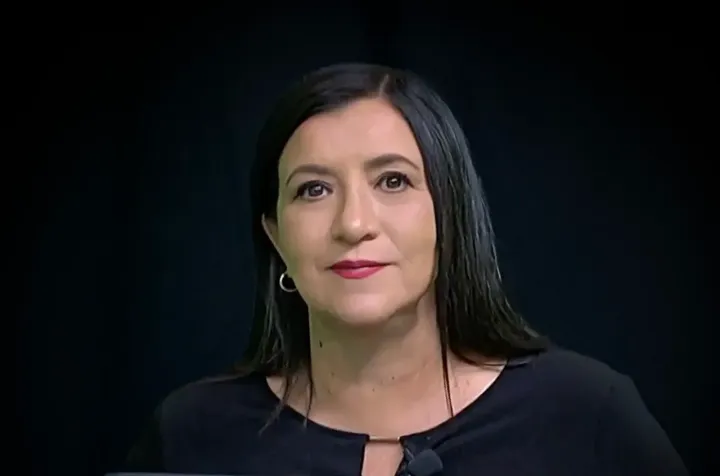
Por Bárbara Anderson

Arlington, Texas: Es como estar dentro de una maqueta de arquitecto. Así se siente pasear a través de los miles de metros cuadrados del AT&T Stadium de los Dallas Cowboys, como estar dentro de una maqueta de arquitecto: pulcro, ordenado, moderno, silencioso, limpio, en cuidadas gamas de gris-azul-blanco, imponente y perfecto.
La trillada frase de “todo es más grande en Texas” se respetó al pie de la letra en este domo que brilla en Arlington.
Sin embargo el guía que nos pasea por el tras bambalinas del mayor estadio de la NFL, hace una pausa en su merolico discurso: “pero como pueden observar está viejo en algunas partes, sus alfombras por ejemplo, y necesita una remodelación inmediata para poder estar listos para el evento que tanta emoción nos causa como es ser parte del Mundial de Fútbol de 2026”. Sonaba a chiste (¿qué le puede faltar a este inmueble altamente tecnológico y pensado para ser único hasta el menor detalle?), pero lo cierto es que durante 2024 recibirá una inyección de 295 mdd y estará cerrado para pulir sobre lo pulido y dejarlo casi sin competencia para ser la sede de la final del Mundial tripartita que compartimos México, Estados Unidos y Canadá. Según los directivos, el estadio mejorará radicalmente el ‘look’ de los 100 mil asientos que despliega en los mega eventos, con un enfoque en lujo para sus áreas VIP aunque la mayor parte de ese dinero será invisible para los espectadores ya que se usará en todo su entramado tecnológico.
“Esta mañana tuve mi primera llamada de trabajo con el equipo de FIFA. Muy curioso porque querían que les diera la información detallada de cómo funciona toda la inteligencia tecnológica del estadio, desde la venta de tickets a nuestra innovación en seguridad informática. No: sólo les dije que me dieran su lista de requerimientos y que yo los iba incluso a superar; nuestra tecnología no se comparte”, nos dijo en rueda de prensa a un grupo de periodistas mexicanos el CIO del estadio, Matt Messick. Si bien no ahondó en dónde estará la inversión, Messick hizo hincapié en la necesidad de ampliar sus redes privadas móviles, ese espectro invisible que consumo tanto debido al uso intensivo de la telefonía celular de miles y miles de personas.
Todo vibra por la tecnología en esta empresa/equipo de fútbol. Su campo de prácticas en Frisco, (The Star) es su laboratorio de pruebas para tecnologías destinadas al estadio AT&T. Por ejemplo, dijo que, durante los primeros años de operación de The Star, los Vaqueros habían creado un sistema de repetición de video para ayudar a los entrenadores y jugadores durante la práctica que se adelantó en el tiempo a los sistemas actuales.
El coloso de Dallas
Cuando se inauguró en 2009, el hoy AT&T Stadium se convirtió en la sede de la NFL más grande, el edificio con cúpula más prominente en Estados Unidos y cuando se cerró el techo, se convirtió en la sala con aire acondicionado más grande del mundo.
Pero sin dudas su corona y sellos fue la pieza central, su impresionante pantalla de 60 toneladas y los dos televisores de 48 por 27 pies frente a cada zona de anotación, un espacio de video de alta definición de casi 60 yardas de largo.
Y una de las razones por las cuales es uno de los estadios más reconocidos es por su tecnología: fue el primero 100% 5G del mundo, que opera AT&T, el consorcio de telecomunicaciones con sede en Texas que tiene el cobranding del equipo deportivo más valioso del planeta (9,500 mdd).
La red celular física y digital de este estadio es la más grande que opera AT&T en ese país y se perfeccionó durante la pandemia aprovechando el cierre de actividades. Cuenta con 56 mil kilómetros de fibra óptica, más mil antenas de 4G LTE lo que le permite crear un sistema que soporta una transmisión de 100 Gbit por segundo. Como ejemplo, el CIO del estadio explicó que en el último partido de los Cowboys contra Texans en diciembre pasado, la red del estadio usó 9,19 terabytes de datos y conectó más de 100 mil llamadas de voz.
5G y deporte
“Queremos convertir a nuestros fans en fanáticos”, dijo el propietario de los Vaqueros, el multimillonario petrolero Jerry Jones en una entrevista cuando fue inaugurado hace dos décadas. Hoy con la velocidad de transmisión wi-fi que alberga, la potencia técnica y la penetración de redes sociales, el estadio es una usina de creadores compulsivos de contenidos. “Es increíble, pero hay que explicarles a los organizadores del Mundial de fútbol que habrá no varias, sino 100 mil tomas y videos en tiempo real de cada jugada, de cada partido, es decir la que cada asistente grabe y transmita en vivo desde su celular”, agrega Jason Inskeep, Director 5G Center of Excellence AT&T.
Y esto es actualmente posible y promete mejorar incluso rumbo al Mundial tripartito de 2026 gracias a, precisamente, la tecnología 5G.
¿Cómo podríamos cambiar la forma en que las personas interactúan con nuestro juego sin ser parte de esa experiencia compartida en el juego? ¿Cómo podría ser algo que no pudieran replicar en ningún otro lugar?, nos decían los directivos del club apoyados en la vitrina que los separa con las toneladas de servidores que soportan su conectividad. AT&T controla el centro de datos del estadio, que es el "cerebro" del edificio.
¿Para qué sirve tener la mayor cobertura 5G en un espacio deportivo o de eventos como este? En seguridad permite monitorear a cada asistente y a grupos de personas para evitar concentraciones y atender sus requerimientos (desde el acceso a su butaca hasta el refresco llevado a su asiento) hasta tomar registro de temperatura de sus empleados y datos biométricos en tiempo real. El centro de control del estadio puede reaccionar ante cualquier eventualidad en todo el espacio.
En experiencia, permite a los asistentes en tiempo real tomar y enviar videos y fotos de alta definición. Además, los jugadores del equipo tienen un chip en su uniforme que le permite a los asistentes conocer la velocidad de movimiento de cada uno, su rendimiento en el partido, estadísticas de jugadas y hasta tomarse fotos con ellos. Además tienen un juego a través de 5G Game View que permite jugar en realidad aumentada con gente dentro y fuera del estadio y hasta crear clips propios. Este nivel de personalización posibilita que los usuarios provean de mayor información al equipo para actualizar los datos y las estadísticas por juego y jugador (la app se llama StARview).
También se puede echar porras desde casa: la app AT&T Fan Zone permite a los fanáticos en casa grabar sus mensajes y reacciones y poder proyectarlas en el tablero LiveFX durante los juegos. En cuanto a servicios en el estadio, “para bajar las aglomeraciones en los mostradores de comida, creamos un mapa que le permitía a cada persona ver la cantidad de gente que había en cada puesto y luego preferimos avanzar un poco más y llevar a cada espectador lo que quisiera hasta su butaca con solo un click”, agrega el CIO Matt Messick.
Ya en el Mundial de Qatar la tecnología en cada estadio permitió un salto cuántico en la interactividad sin pérdida ni de señal ni de calidad en las llamadas. En momentos picos de los partidos en cada sede, las velocidades de 5G llegaron a picos de 2Gb por segundo, el equivalente a unas 630 mil llamadas de voz por segundo. Y fue el debut también de la app FIFA+ que permite justamente acceder a estadísticas en tiempo real, mapas de calor y hasta las repeticiones del VAR en tiempo real (es decir, junto al propio referi).
Seguramente el Mundial 2026 será más vivencial que nunca antes y sin dudas los avances que la NFL viene imponiendo en el deporte más convocante en Estados Unidos se expandirá a la FIFA, una organización que llega rezagada a este juego donde ya no todo ocurre a nivel de cancha sino a nivel de pantalla de celular.
Por lo pronto pondrá a la tecnología 5G como un nuevo ‘mínimo’ para los estadios sedes de este lado de la frontera.
Las opiniones expresadas son responsabilidad de sus autoras y son absolutamente independientes a la postura y línea editorial de Opinión 51.
Más de 150 opiniones a través de 100 columnistas te esperan por menos de un libro al mes.






Comments ()